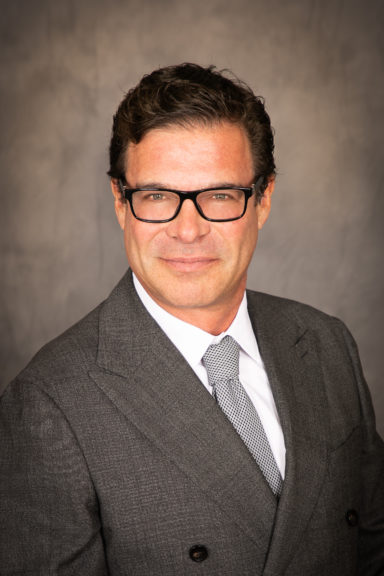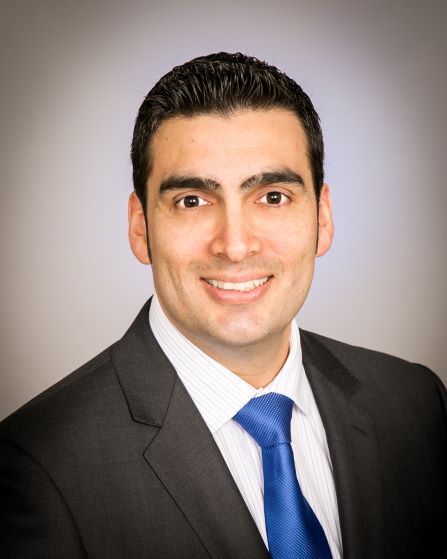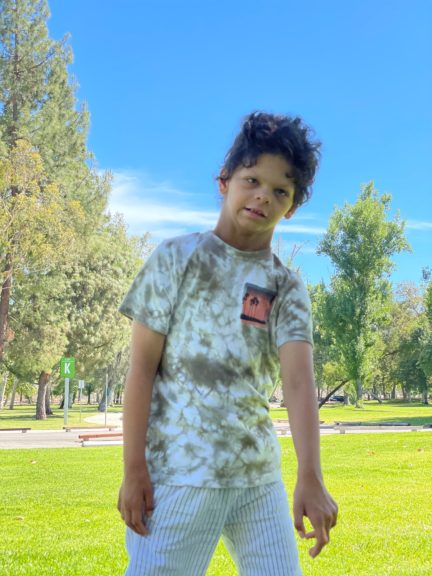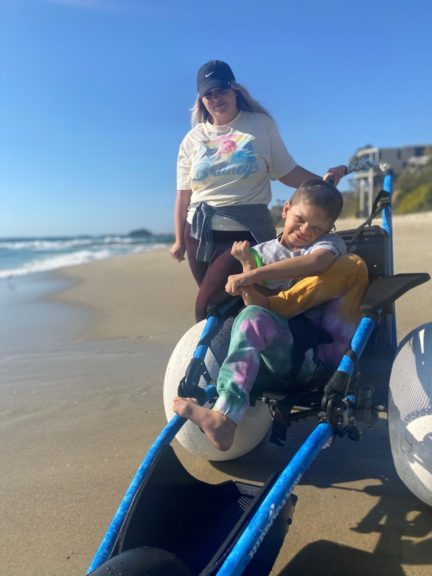Ryder Montano is the third and youngest CHOC patient with a movement disorder to undergo a procedure called deep brain stimulation (DBS), which is designed to ease involuntary movements by sending electrical currents that jam malfunctioning brain signals. CHOC treated its first DBS patient in late 2020.
Ryder is also among CHOC’s dramatic DBS success stories.
The procedure is being championed by DBS pioneer Dr. Terence Sanger, a physician, engineer, and computational neuroscientist and vice president, chief scientific officer at CHOC, and vice chair of research for pediatrics at the UCI School of Medicine. The DBS team also includes Dr. Joffre E. Olaya, CHOC’s functional restorative neurosurgeon, who implants the electrodes, as well as collaborating partner Dr. Mark Liker, a neurosurgeon at CHLA.

Dr. Terence Sanger 
Dr. Joffre E. Olaya
In January 2021, Ryder underwent surgery at CHOC to replace four electrodes in his brain that help ease the severity of a movement disorder, post-pump chorea, that he developed after he had open-heart surgery at age 2 ½. Since those four electrodes were replaced, he has shown remarkable improvement, Ashley says.
“It’s just incredible and mind-blowing that this is happening because of DBS,” she says.
Ashley says Ryder’s clinical team at CHOC had expectations that were lower than what the outcome turned out to be. They thought his condition would worsen before it got better.
But in February 2021, for a post-op appointment, Ryder walked into Dr. Sanger’s office for the first time by himself. He also stood on a scale and sat in a chair without assistance.

Now, Ryder also can walk independently, feed himself, and sit down and watch a movie. He is limited verbally and uses an AAC (augmentative and alternative communication)device to say simple things.
“I’m so happy to see how well Ryder is doing,” Dr. Olaya says. “This procedure has tremendously improved his quality of life.”
Answers at age 2
Ryder was born full term on Sept. 29, 2011. He had a heart murmur, but his mother, Ashley, didn’t get a lot of answers from Ryder’s cardiologist until their son was 2. That’s when doctors at another hospital determined that Ryder had been born with supravalvar aortic stenosis (SVAS) and Williams Syndrome.
SVAS, a heart defect that develops before birth, is a narrowing of the large blood vessel that carries blood from the heart to the rest of the body.
Williams Syndrome is a rare genetic condition that affects many parts of the body. It is caused by missing more than 25 genes from a specific area of chromosome 7. Williams Syndrome can cause mild to moderate intellectual disabilities, unique personality traits, distinctive facial features, as well as heart and blood vessel problems.
Ryder’s Williams Syndrome led to him undergoing open-heart surgery at 2 ½, which in turn led to post-pump chorea, which causes involuntary twitching or writhing.
“He was walking and talking and drinking from a cup prior to surgery,” Ashley recalls. “He woke up one day and wasn’t able to sit up or hold his head up or make eye contact. He made weird movements. I first thought it was withdrawal symptoms from the medications he took for the surgery.”
Ryder first saw Dr. Sanger in 2016 at CHLA (Dr. Sanger came to CHOC in March 2020). Ryder’s first DBS surgery was in 2017, the same year he got four permanent electrodes. One of the leads got entwined with a growing bone, which prompted the January 2021 surgery to replace all four electrodes.
The perfect team for Ryder
Ashley and her husband, Al, are determined to provide Ryder with the best quality of life possible. His DBS treatment at CHOC, they say, has made a huge difference.
“Ryder and Dr. Sanger were a perfect match,” Ashley says. “I’m very thankful for DBS and Dr. Sanger. I feel he thinks outside of the box. There are so many other neurologists who think, ‘Oh, let’s just load (the patient) up with medication.’ But Dr. Sanger wants to get at the root of the problem and fix it.”

Dr. Olaya stressed the importance of teamwork in treating Ryder and other DBS patients at CHOC.
“We are so fortunate to have the resources and the team here at CHOC to offer DBS treatment to patients with moving disorders,” he says. “Jennifer MacLean, Ryder’s nurse practitioner, is very involved with his care and treating other DBS patients as well. It’s not just one person. It really is the nurses, the OR staff – it’s a lot of people collaborating.”
“I’m so thankful for everybody at CHOC,” Ashley says. “I just feel that without the entire team, none of this would be possible for Ryder or for really anybody. It makes me so happy to know we’ve not only improved Ryder’s life so much, but we’re helping improve other kids’ lives, too. Dr. Sanger goes the extra mile and it’s so amazing to think, yes, that’s our doctor.”
Ashley says Ryder has worked very hard to get to where he is today.
“We’ve all worked hard together to get to this place and give Ryder the validation to show him how much we realize how hard he’s been working,” she says. “I know it’s defeating for a kid who understands but can’t communicate well, but he’s working very hard.”




